StoryWeaver Spotlight: K. Suresh
Posted by Remya Padmadas on June 25, 2019K. Suresh likes to be known as a translator and has several books published for adults as well as children. He is one of the founders of Manchi Pustakam, a Trust for publishing and distributing children's books in Telugu. The organisation has more than 200 titles published by it and distributes an equal number of select books by other publishers. His emphasis is on books that create interest in and love for books among children. He feels that there is a great need for graded books that help children to increase their reading capacities. He has translated many stories to Telugu for Pratham Books including 'The Cat in the Ghat!' and 'What If?'. You can read his stories Mouse in the House and Lost and Found on StoryWeaver.
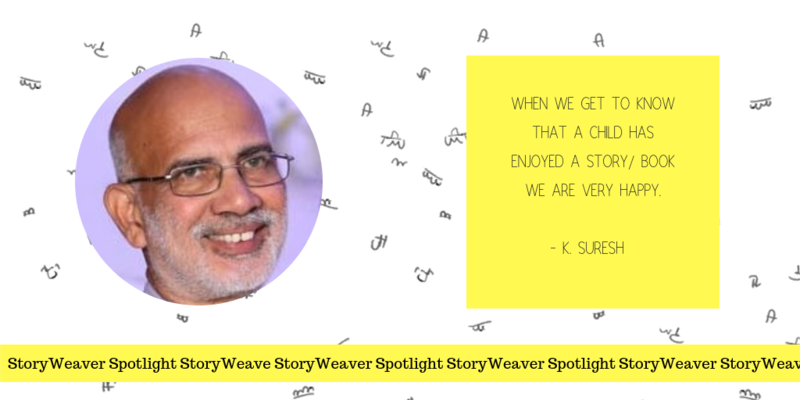
Q: What type of person do you think makes the best translator for children’s stories?
A person who loves books, likes children and respects them.
Q: Do you have any advice for anyone interested in becoming a translator?
A: The person should have good command over both the languages and should know the nuances. S/he should also know the cultural context and usage of idioms and phrases in both the languages. One should also read a lot.
The language for children should be simple. While translating one should use available vocabulary, though English words are commonly used. After completing the translation, give some gap and read it again without the source language text. Read it objectively, as if it was done by others and your job is to find errors in it.
Q: A book you'd like to recommend to other translators?
I suggest that the translators start with what they like and should feel that the children in the other language would miss a lot if that book isn’t translated. Obviously, I would suggest a book that I love very much.
Q: What is your personal relationship to language and/or translation?
I love to read books. I have started my work as a sub-editor in a Telugu newspaper, which involved translation and cultivated it over the years. I am not a creative writer, so I take pride in translation!
Q: When you’ve been given a story to translate, what’s your process, and how long does it generally take?
Sometimes I jump into translation. Sometimes, I read the entire story and sleep over it. While reading and in the free time, I think about the appropriate words and how it will be in Telugu.
Q: What do stories in translation bring to young readers?
It opens up their world! It introduces a new culture.
Q: You’ve translated stories for us. Which has been your favourite to work on?
I had the fortune of translating, reviewing and being a Guest Editor for Pratham Books. I liked translating The Cat in the Ghat!
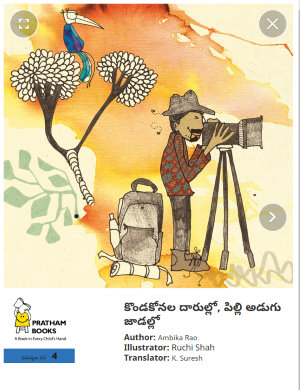
Q: What is the hardest thing about translating from English into Telugu? How do you navigate words or phrases that are tricky to translate?
The structure of English sentence is complex; it can take several adjectives and be very long. Breaking the sentences while translating sometimes results in losing the emphasis. The rhyming and punning with English words is difficult to translate. After the first translation, I explore simpler expressions and choice of vocabulary.
Q: How do you feel when your story reaches the child?
When we get to know that a child has enjoyed a story/ book we are very happy.
Q: Translating stories must have required research when it came to STEM related terms and concepts. How did you explore new objects and concepts?
For some words, I look up the dictionary. Sometimes re-writing helps. Constant reading will add to one’s vocabulary.
Q: How else do you think we can join hands to take more stories to more children in more languages?
Pratham Books and Tulika are doing excellent job in multi-language publications. StoryWeaver is providing a platform for exchange of books in various languages. Arvind Gupta is encouraging multi-language translations of children’s books and posting them on internet archive. Earlier there was considerable direct translation in regional languages, now English has become the connecting language. A publishers’ consortium for exchange of rights would be beneficial.
Q: As a publisher and translator what do you think is the best way to approach a child?
The general tendency is to preach to children, which I do not subscribe to. We expect lot from children without practising/ following them. The best way is to make a range of books available to children from which they can choose. We should not be overly worried about what they learn from a book. They will definitely learn from books and the society at large.
Be the first to comment.
StoryWeaver Spotlight: Aboli Chowdhary
Posted by Pallavi Kamath on June 09, 2020Aboli Chowdhary is a Spanish teacher and StoryWeaver Language Champion. She has translated over 30 books into Spanish. We reached out to her to come on board to build curated lists of Spanish resources that are particularly in need to keep children engaged, while they are away from school due to the ongoing pandemic. Aboli instantly agreed to help us. Read this piece by Aboli, where she shares her thoughts on translation and her experience using StoryWeaver’s Translate tool.
Hello, I am Aboli Chowdhary from Pune, India. I am a Spanish teacher and freelance Spanish translator. I love travelling. Although I was born and brought up in Mumbai, I got opportunities to live in cities like Bangalore and Vizag (Visakhapatnam).
Do tell us about your relationship with Spanish - what drew you to learning the language, and then teaching it?
My relationship with Spanish goes back to 2014, when I first started learning Spanish. I must mention here that it was by chance! After working in the demanding retail sector for a few years, I wanted to learn a new language, and Spanish seemed to be one of the languages of the future, considering there are almost 420 million Spanish speakers spread across 21 countries! After completing an advanced diploma in Spanish, I wanted to stay in touch with the language and practise it, so I started teaching.
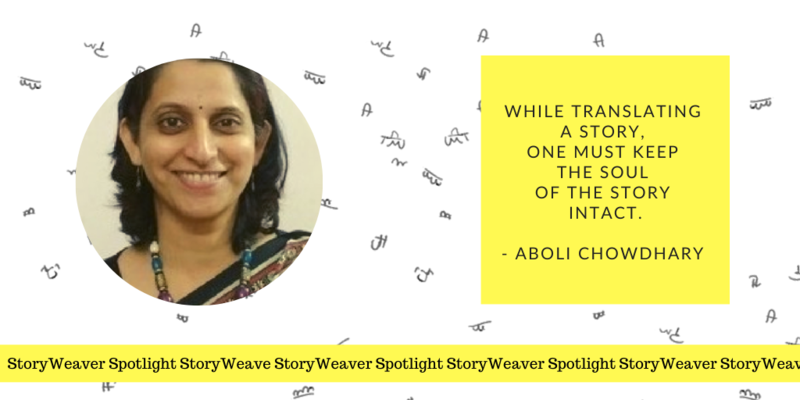
What is your experience of teaching children a foreign language and translating for children?
It’s fun teaching any foreign language to children! They are curious to learn not only the language but also its culture. And that, in my opinion can be best explored through stories.
One of the biggest challenges while translating a story is ‘keeping the soul of the story’ intact. One has to be very careful in choosing colloquial expressions, while at the same time promoting cultural exchange.
When you have been given a picture book to translate, what is your process, and how long does it usually take? How was the experience of translating on StoryWeaver?
My experience with StoryWeaver has been wonderful thanks to the friendly interaction with its members and their prompt technical support.
For translation, I generally re-read the story and try to understand its core values and message. The next step is to find the apt expression in Spanish and then translate. I found some of the stories like ‘Ammachi’s Amazing Machines’ challenging while translating the sound words into Spanish. But at the same time, while translating stories like, ‘The Rainbow Sambar’, I had to maintain the ‘Indian essence’ by using local language words with an explanation.
Luckily, the time taken to translate the stories got reduced due to the available translation draft. I used this feature on the StoryWeaver platform for translating several stories and made the necessary changes to the words and expressions.
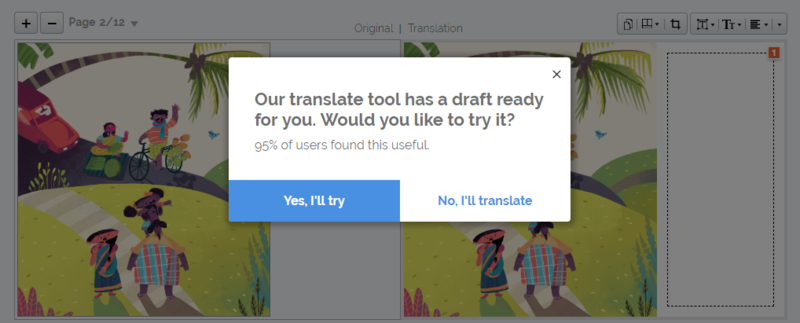
How do you approach translating the storybooks across varying Reading Levels?
Reading levels are based on the exposure to the language, rather than just age of the reader. Keeping this in mind, I use simple and easy words with occasional sound words for the earlier levels.
What are some of your favourite books from childhood? Is there any memorable reading experience that you would like to share?
I remember reading numerous ACK (Amar Chitra Katha) books in my childhood, especially on long train journeys! The language was simple with great illustrations!
We are so grateful for your contribution towards Spanish content on the platform, especially during these difficult times when there is such a need for children's reading material. Thank you for sharing the joy of reading in Spanish!
I believe that the potential of this platform is tremendous, especially since the COVID-19 outbreak. I strongly recommend reading books on this platform.I want to translate more stories into Spanish soon. So, ¡Nos vemos pronto! (See you soon!) :-)
Read the books translated by Aboli here.
StoryWeaver wins the mBillionth Awards 2019-2020!
Posted by Remya Padmadas on February 19, 2020Written by Pallavi Krishnan
We are incredibly proud to share that Pratham Books' StoryWeaver is a winner at the mBillionth Awards South Asia 2019-2020 in the Learning and Education category.

With the rapid increase in penetration of mobile technology across almost all socio-economic strata around the world, the mobile phone has emerged as the most powerful digital tool for empowerment across the world. This is more so in South Asia, Asia Pacific and other parts of the developing world.
Recognising this phenomenon, in 2010, Digital Empowerment Foundation (DEF) launched the mBillionth Awards South Asia to highlight, recognise, and reward best practices, excellence and innovations in the development and usage of mobile phone applications. With the theme of “Smart Phones to Smart Communities”, the award looks at mobile applications which can create transformative content and services and help engender remarkable and long-term changes in the lives and livelihoods of people, especially the underserved and socio-economically disadvantaged section.
The Learning and Education category recognises the use of mobile applications that empower the education sector and serve the needs of learners to acquire knowledge and skills. The aim is to identify and honour applications that try to transform schools, universities and other educational institutions through interactive, personalised and distributed learning resources; address the learning needs of all, and create active e-Learning communities.
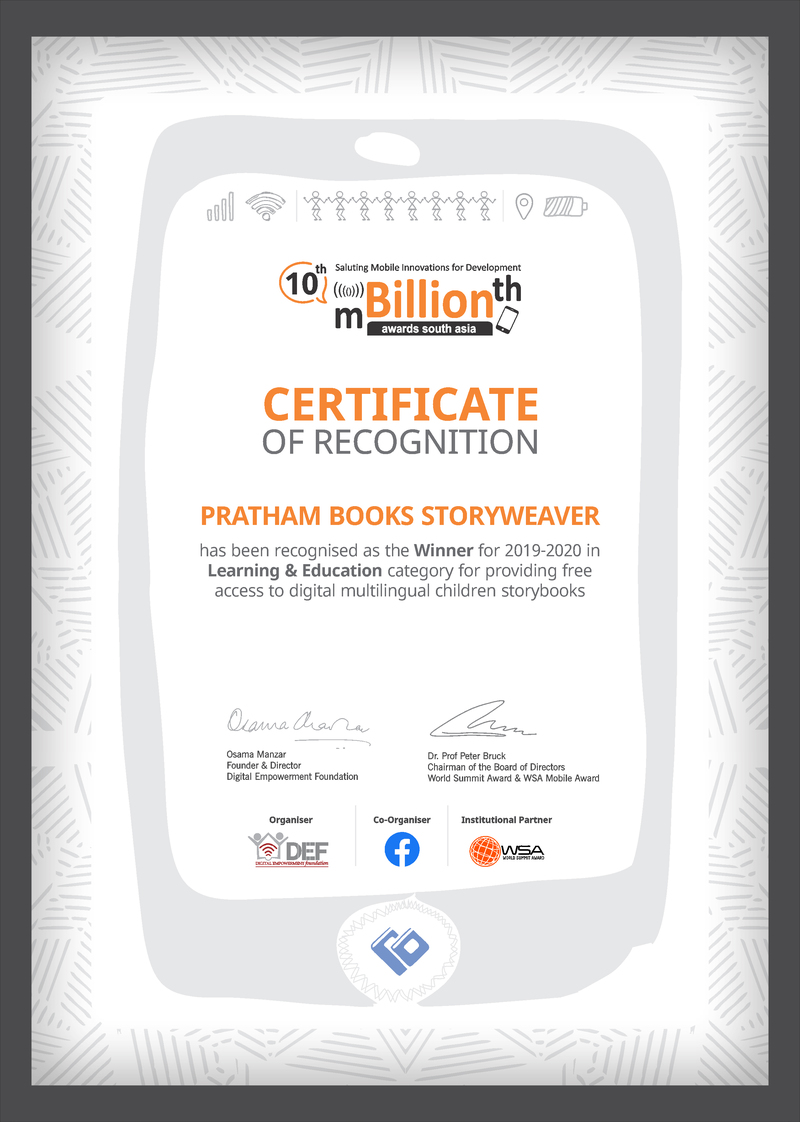
Suzanne Singh, Chairperson Pratham Books, Himanshu Giri, CEO Pratham Books and Anamika Radhakrishnan, Senior Product Manager, StoryWeaver attended the 10th mBillionth Award Gala 2019 at The Eros Hotel, Nehru Place, New Delhi on February 1st, 2020.
Be the first to comment.